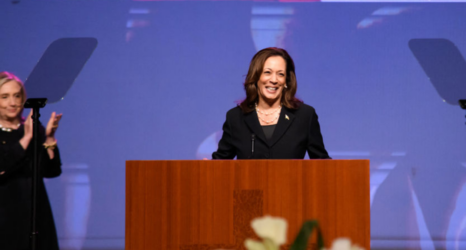In an attempt to explain Tuesday’s presidential election results, some media outlets and commentators have looked to pin the electoral outcome on a specific demographic set of voters: black voters didn’t turn out, more Latinos supported Trump than expected or women abandoned Clinton. These narratives are not only short-sighted, but largely incorrect.
For example, experts from Latino Decisions have reported on the inaccuracy of exit polling of Latino voters. Others note the very real voter suppression efforts that have had a disproportionate effect on black voter turnout, and comedian Samantha Bee begged viewers to turn their attention to white voters, the voters who ultimately elected Donald Trump.
Some of Bee’s sharpest criticism was directed at white women, who she claimed chose a “vial of weaponized testerone” over the first female president. Bee’s commentary is not unfounded; the majority (53 percent) of white women cast their ballots for Donald Trump on Tuesday. But the idea that white women “abandoned” Clinton, or the feigned surprise at their voting behavior, is misleading.
The majority of white women have voted for the Republican presidential candidate in every election since 2004, and they have done so in greater proportions than they did this year. In 2012, 56 percent of white women voted for Mitt Romney. John McCain earned 55 percent of white women’s votes in 2008, and George W. Bush won the support of 55% of white women in 2004. Clinton actually fared slightly better among white women than Barack Obama did in 2012, earning 43 percent of their votes compared to the 42 percent for Barack Obama four years ago. In fact, Clinton outperformed Obama significantly among college-educated white women, earning 51 percent of their votes and besting Trump among this group by six points; in 2012, Mitt Romney held a six-point advantage against Obama among this group. In 2008, when Obama fared better among college-educated white women, he still earned just 52 percent of their votes. Moreover, Clinton won married women by 2 points, the first Democratic candidate to do so in 20 years.
What explains these data? Party identification. In 2016, Pew found that the plurality of white women identified as Republicans. Among white women without a college degree, Republican Party identification has grown over the past 24 years. With this knowledge, it’s far less surprising that Trump outperformed Clinton among this demographic. Party identification is the key indicator of vote choice, and there is no evidence that gender affinity would buck that trend. Research from scholars and the Barbara Lee Family Foundation backs this up, with decades worth of findings that party trumps gender in voter decision-making.
That false presumption of gender affinity–that women would be more likely to vote for a woman candidate–seems to be at the root of the apparent shock that white women didn’t support Clinton. Of course, Democratic women were just as unlikely to support a Republican ticket with a woman on it in 2008 as Republican women were to vote counter to their party identification for a female-led ticket in 2016. Few people expected Democratic men to vote for Trump this year simply because they share the same chromosomes, so perhaps we shouldn’t apply that logic to women either.
A more reasonable prediction of women’s shift to Clinton came from those who assumed that Trump’s misogynistic comments and behavior would deter women across parties to support his candidacy.
There was evidence of that potential defection in polls showing high unfavorability ratings for Trump among Republican women throughout the election cycle. But disliking Trump may not have translated into voting for Clinton, and we shouldn’t have expected it to; if anything, it may have simply caused some GOP women to stay home or write in a candidate that shares their ideology.
We can debate whether or not white women’s support for Republican politicians or policies is in their best interest or not, which seems to be the real critique underlying post-election narratives, but claiming that Clinton somehow failed to win white women is an unfair characterization of the facts.
Finally, claiming that women abandoned Clinton not only misrepresents historical facts and misunderstands what motivates women’s (and men’s) voting behavior, but also excludes the majority of women–who did vote for Clinton–from the picture. Clinton won 54 percent of women’s votes on Tuesday night, a performance on par with Democratic presidential candidates in the past two decades. More specifically, the majority of women cast their ballots for Hillary Clinton in 23 of the 28 states where exit polls are available. If only women voted, Trump’s success in at least 10 battleground states–AZ, FL, GA, IA, MI, NC, OH, PA, TX, WI–would have been reversed.
The narrative of abandonment is particularly exclusive of women of color. Clinton won 94 percent of black women’s votes, similar to the 96 percent of black women who voted for Obama. In Latino Decisions’ election eve poll, 86 percent of Latinas reported supporting Clinton–18 points higher than the national exit poll. In the same poll in 2012, 77 percent of Latinas expressed support for President Obama. These women voters have been key to Democratic candidates’ success, and that remained true this week.
In the autopsy of the election 2016, there is good reason to pay close attention to women voters, but that means doing the work to avoid homogenizing them or evaluating their behavior without historical context. Only then will we tell a complete, and complex, story about women voters’ influence in the race to put a woman in the White House.
Opinions expressed here are the author’s own. Ms. is owned by Feminist Majority Foundation, a 501(c)3 organization, and does not endorse candidates.





